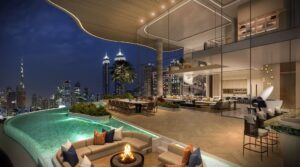The age-old adage in real estate, “kitchens sell homes”, has long guided homeowners and developers alike. But in 2025, with changing lifestyles, rising property costs, and shifting buyer expectations, is the kitchen still the heart of the home? Or are buyers now drawn to other, more functional or experiential aspects?
Let’s unpack what buyers truly value today, and whether investing in a kitchen makeover is still the wisest move for boosting your home’s appeal and value.
Why Kitchens Have Traditionally Been Dealmakers
Historically, the kitchen has symbolized warmth, togetherness, and daily utility. It’s the one space that blends design, functionality, and emotion. For years, updated kitchens have been shown to increase resale value and shorten time on market.
But 2025 isn’t 2015. With the rise of remote work, smart homes, and sustainability concerns, buyer priorities have evolved.
What Homebuyers Value in 2025
Here are the key elements buyers prioritize in today’s market:
| Buyer Priority | Description |
|---|---|
| Functional Layout | Open plans are still popular, but efficient use of space is now non-negotiable. |
| Smart Technology | Voice-activated lighting, smart refrigerators, and app-connected ovens are in demand. |
| Sustainable Materials | Buyers are opting for recycled countertops, water-saving fixtures, and eco-friendly cabinetry. |
| Storage Space | Hidden drawers, walk-in pantries, and appliance garages are hot right now. |
| Easy Maintenance | Matte finishes, stain-resistant materials, and self-cleaning appliances are gaining traction. |
| Personalization Potential | Buyers want a space they can make their own, neutral palettes are winning. |
So… Do Kitchens Still Sell Homes?
The short answer: yes, but not in isolation.
A well-designed kitchen is still a powerful selling point, but only when it fits into a broader, functional home layout. Today’s buyers want cohesion, not just a showpiece kitchen.
The Psychology of Modern Buyers
Today’s kitchen isn’t just for cooking, it’s often:
- A secondary workspace
- A content creation zone for home chefs or influencers
- A hub for entertaining in smaller apartments or open-concept homes
- A visual marker of lifestyle (clean, sustainable, tech-savvy)
This multifunctionality has made kitchens more relevant in some ways, but only if they adapt to these expectations.
Features That Make Kitchens More Attractive in 2025
Here are the kitchen features that grab buyer attention in today’s listings:
- Multi-Zone Layouts: Separate prep, cooking, and cleaning zones help manage family use and reduce clutter.
- Smart Storage: Think vertical pull-outs, toe-kick drawers, and corner cabinet solutions.
- Energy Efficiency: Induction cooktops, LED lighting, and low-energy appliances are essential.
- Natural Elements: Stone counters, wood cabinetry, and warm lighting tones are becoming more popular than high-gloss whites.
- Seamless Integration: Hidden appliances and handleless cabinetry that blend with surrounding spaces are trending.
Mistakes Sellers Still Make
Here’s what to avoid when remodeling your kitchen to attract buyers:
- Over-customization: Bright red cabinets or overly niche layouts turn off more buyers than they attract.
- Ignoring Flow: A beautiful kitchen that’s hard to navigate is still a deal-breaker.
- Going Too High-Tech: Not every buyer wants a kitchen that feels like a command center.
- Skipping Ventilation: With open layouts, proper venting is more important than ever.
Is It Worth Investing in a Kitchen Renovation Before Selling?
Let’s break it down:
| Investment Type | Average ROI (2025) | When It’s Worth It |
|---|---|---|
| Minor Cosmetic Update | 80–90% | Outdated kitchens that need a refresh |
| Mid-Range Renovation | 60–75% | Homes in competitive neighborhoods |
| High-End Remodel | 40–60% | Luxury homes where buyers expect the best |
Smaller improvements like upgrading fixtures, repainting cabinetry, or installing a new backsplash often offer the best bang for your buck.
Kitchens still sell homes, but in 2025, it’s not about granite countertops or flashy islands. It’s about a space that’s intelligent, sustainable, and seamlessly woven into a buyer’s lifestyle.
If you’re planning to sell, think less about trends and more about how a buyer would live, cook, and feel in your space.
After all, the best kitchens are the ones people can imagine themselves living in, not just photographing.

)
)
)
)




